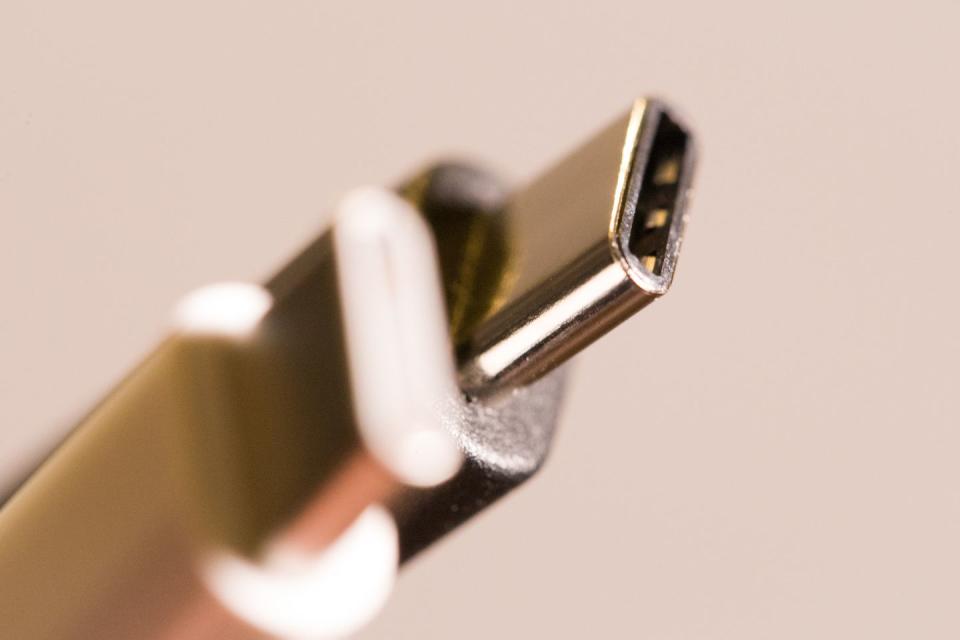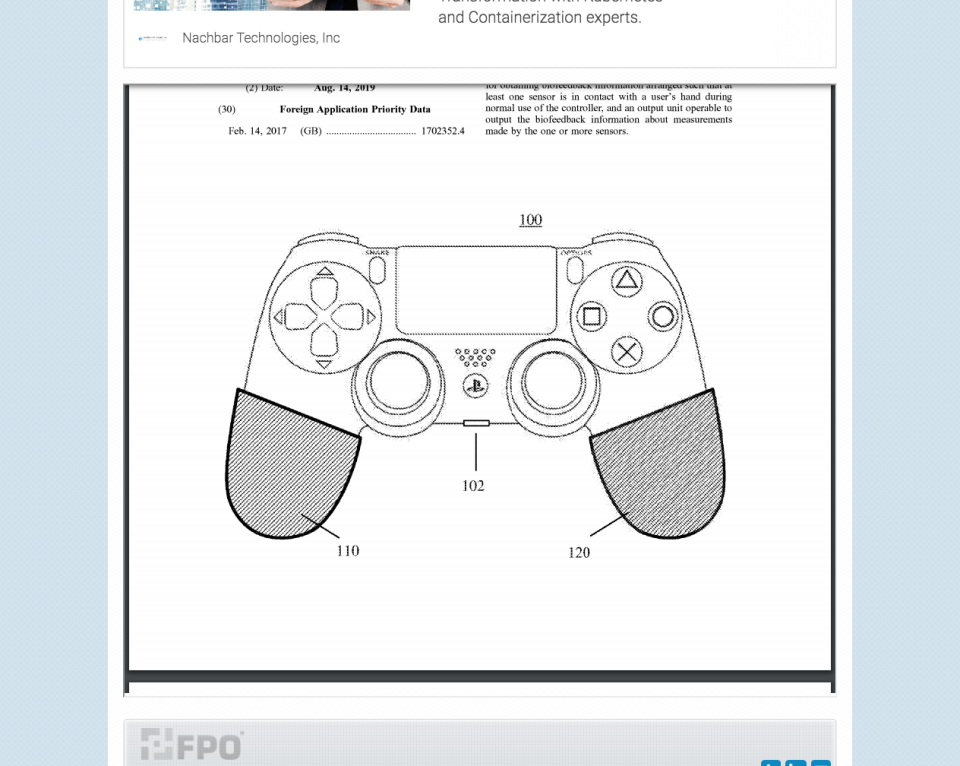The New PS5 Controller Will Forever Change the Way You Game
Sony has officially released its newest PlayStation controllers in advance of the official PS5 launch on November 12. So far, we know the "DualSense Wireless Controllers" will look a little bit like Storm Troopers, with a futuristic black and white design, but it's the insides that we really care about.
👾 You love badass games. So do we. Let's nerd out over them together.
This time around, it's all about the tactile experience of playing a game—something that will really allow you to feel like you're inside a title. Sony hasn't come out with a new controller since 2013, when it introduced the PlayStation 4, and virtual reality gaming has really found its groove since then, making immersive gameplay on the platform more vital than ever.
"Based on our discussions with developers, we concluded that the sense of touch within gameplay, much like audio, hasn’t been a big focus for many games," Hideaki Nishino, senior vice president for global product strategy and management at Sony, wrote in an April blog post, announcing the new controller. "We had a great opportunity with PS5 to innovate by offering game creators the ability to explore how they can heighten that feeling of immersion through our new controller."
Specifically, Sony has introduced new haptic feedback sensors with the new PS5 controllers, and it should be a serious step up from the simple vibrations you could experience with the DualShock 4 Wireless Controller. Think: feeling the impact of a spray of mud while driving a car full-throttle through a puddle, or the tension of drawing a bow to shoot an arrow.
Here is every new feature you can look forward to with the new DualSense Wireless Controller, and even a few bleeding edge predictions that we have for PlayStation 6 controllers in the future.
🎮 Haptic Feedback
With the new controller comes a novel haptic feedback system—one that you can feel all throughout the device. Dual actuators inside the controller replace the DualShock 4's more traditional rumble motors, according to Sony. So prepare to feel the recoil from weapons, and more impact from your environment in the left and right grips.
If the idea is still foreign to you, consider the Nintendo Switch. While playing certain Nintendo Switch games, the Joy Con controllers use a feature the company refers to as "HD Rumble" to simulate different sensations, like ice cubes touching the sides of a glass.
In Super Mario Party, for example, there is a mini game where you must shake jelly beans in a glass container until they fall through the opening at the bottom of the jar. As you shake the controllers, you can feel the "clink" that the candies make as they hit the sides of the container.
🎮 Adaptive Triggers
Complementing the haptic feedback updates, Sony has also introduced adaptive triggers that play on the way you can experience force and tension in a game. You might feel some resistance in the left and right triggers while drawing back a bow to shoot an arrow, or while accelerating a dune buggy to drive through a pit of sand.
Sony says it should help you "feel physically connected to your on-screen actions."
🎮 Integrated Sound
Sony refers to the built-in speakers as adding "extra dimension with higher-fidelity sound effects" to the gaming experience, with sound "bursting" from the controllers.
Once again, this really builds upon some pioneering work from Nintendo. Back in 2006, when the company first released the Wii, the controllers could emit strange clicking noises that urged you to take your turn, or complete some action. These sounds weren't particularly immersive, or smart, or even high-quality in sound, but it was a first attempt at more immersive sound design.
To be sure, the PS4's DualShock controllers use a similar technology (although, in a more sophisticated way than the Wii). While playing The Last of Us Part II, for example, you have to shake the controller to get your flashlight to turn back on, and there's an accompanying hollow shaking sound that comes with that motion. When the infected are close to you, there's also a clicking sound that can take you by surprise.
Kyle Orland, senior gaming editor for Ars Technica, describes this phenomenon in a first-look review of the PS5:
When Astro runs over sand, for instance, each footstep softly shuffles through the controller as both sound and vibration. Walk on glass, and the footsteps tap-tap-tap with both light shakes of the controller and tinkling sound effects in your hands. When Astro gets blasted with wind, the full-controller rumble is met by the sound of a breeze. And though the controller rumbling is very similar when Astro slides across the ice a few minutes later, the "skkkkt" sound of skates cutting across the rink creates a completely different sensation.
🎮 "Create" Button
This feature is less about innovation and more about convenience. With the Create button, which builds upon the prior generation's Share button, you can now more easily take screenshots or start a livestream broadcast.
🎮 USB-C

Sure, the connector system might not be the sexiest feature, but in this case, it's an absolutely welcome one. The DualShock 4 controllers used a micro-USB connector that's frankly outdated today, so we're really glad to see Sony is implementing the USB-C standard, which is way more powerful for data transfer and charging.
These connectors can not only charge large devices, like laptops (Apple has been using them for some time now with the MacBook Pro, and Samsung and Google use them in smartphones), but also offer up to two times the transfer speed of USB3.
🎮 Motion Sensors
A built-in accelerometer and a gyroscope will help to bring "intuitive motion control" to certain games. Basically, when you move the controller, you'll be able to sync up with whatever's happening on-screen.
🎮 Built-In Microphone and Headphone Jack
This is pretty self-explanatory. If your cat has chewed through your headphones, or you haven't purchased a wireless headset yet for some reason, you can still talk to your friends with the built-in mic. There's also a dedicated mute button, just in case.
What's Still On the Horizon?

You don't even have the DualSense Wireless Controller in your hands yet, but we're going to muse a bit about what could be in the PS6's controllers—because why not? With the addition of advanced haptic feedback, smart triggers, and immersive sound, it's clear that Sony is focused on making the gaming experience as personalized and enveloping as possible.
That's why a new idea from Sony earlier this year caught our attention. In February, the U.S. Patent and Trademark Office granted Sony a patent that may give us a clue about what to expect from a future controller.
It's for "A Sensing Apparatus and Method," a.k.a. biofeedback in controllers. Just imagine the controller picking up on your fast heartbeat and sweaty palms during a showdown in a first-person shooter game and having more enemies pop up to fight you as you're hitting critical nail-biting status. It feels a bit like the "Playtest" episode of Black Mirror, but hopefully in a less sinister way.
In the patent, Sony says "it is advantageous to provide peripherals" to create an even more connected gaming environment. In other words, tactile responses will only augment the existing immersive gaming landscape. This really does align with the vision we've seen for PS5, so it's not completely insane to consider this bleeding-edge technology could be on the way in a few years.
Just remember: Patents don't always mean a company is working on a product. It could be more about strategy and keeping Microsoft from heading in this direction.
You Might Also Like

